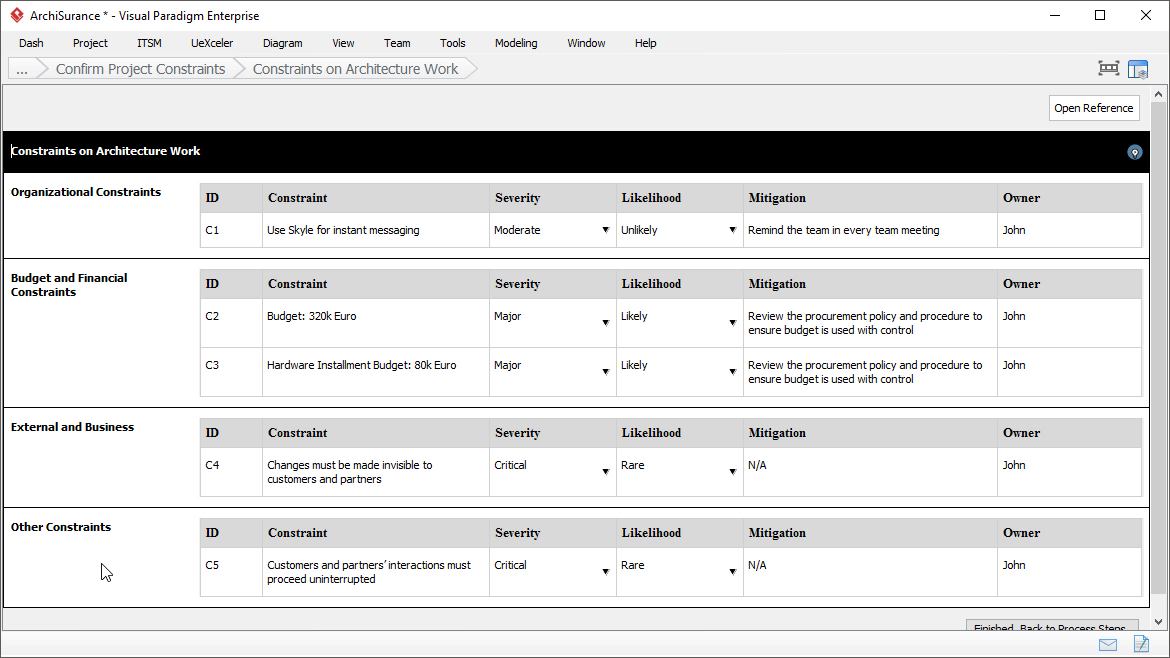The Architecture Vision is one of the TOGAF deliverables you can create with the TOGAF tool. It is created early on in the project lifecycle and provides a high-level, aspirational view of the end architecture product. The purpose of the vision is to agree at the outset what the desired outcome should be for the architecture, so that architects can then focus on the critical areas to validate feasibility. Providing an Architecture Vision also supports stakeholder communication by providing an executive summary version of the full Architecture Definition.
Step 1: Define the Problem and Identify Change Drivers
Describe the problem, and list the change drivers and opportunities
Provide a description of the problem. In this step, you are required to enter the followings:
- Problem Background: Describe the business context and business problem.
- Change Drivers and Opportunities: Identify the change drivers and opportunities behind this vision for the target architecture. This could be a business problem being solved or an opportunity for an improvement.

Step 2: Identify High Level Architecture Objectives
List the business objectives and derive business requirements
List and describe the objectives that need to be fulfilled by the target architecture. In the previous activity you have identified the business problem, whereas this activity requires you to determine the objectives, for the architecture solution, that will resolve the business problem. You are required to enter the followings:
- Business Objectives: Business objectives to solve business problem, and technology objectives such as decommissioning.
- Business Requirements: High level business requirements derived from the objectives.
- Solution Concept Diagram (Optional): Presents the architecture solution visually with an ArchiMate diagram. Relate the business objectives and business requirements. Add additional shapes to show the actors, their concerns and the assessment of drivers in identifying business objectives.
Note that a detailed analysis and documentation of architecture objectives and requirements will be performed in Phase B, C and D. At this point you just need to list the objectives and requirements enough for defining the Architecture Vision.
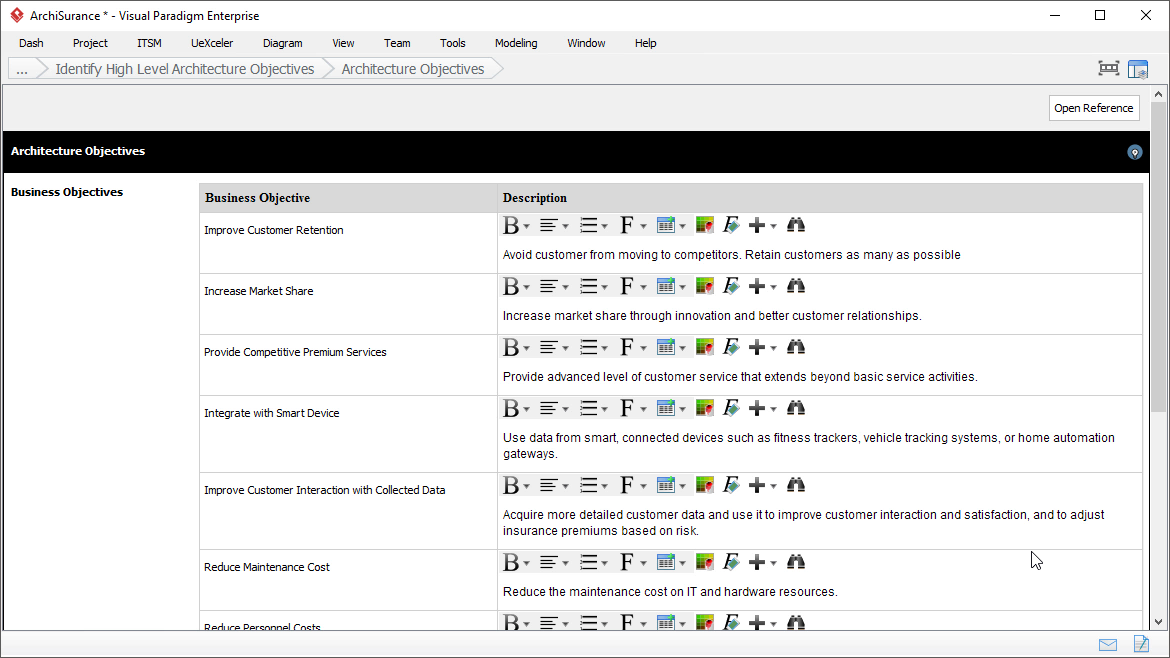
The figure below shows a solution concept map example:
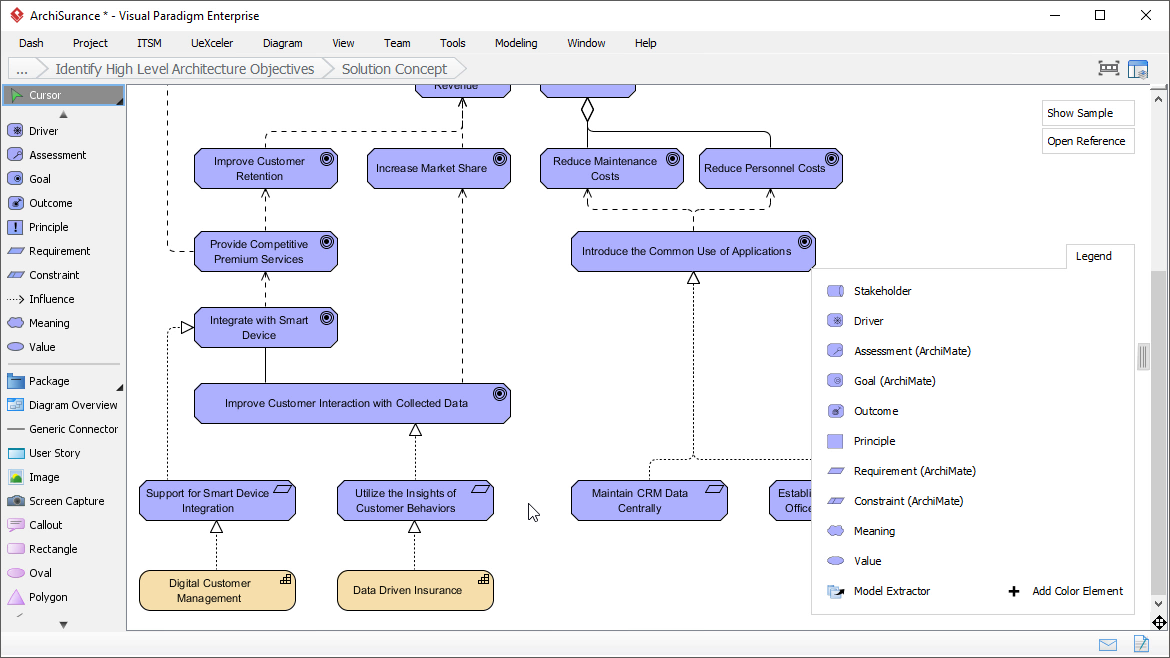
Step 3: Identify Stakeholders and their Concerns
Describe the stakeholders’ concerns
Identify the key stakeholders of the architecture activities as well as to state their concerns. Typically, stakeholder are people who actively involved in the project, or whose interests may be affected positively or negatively by execution or completion of the project.
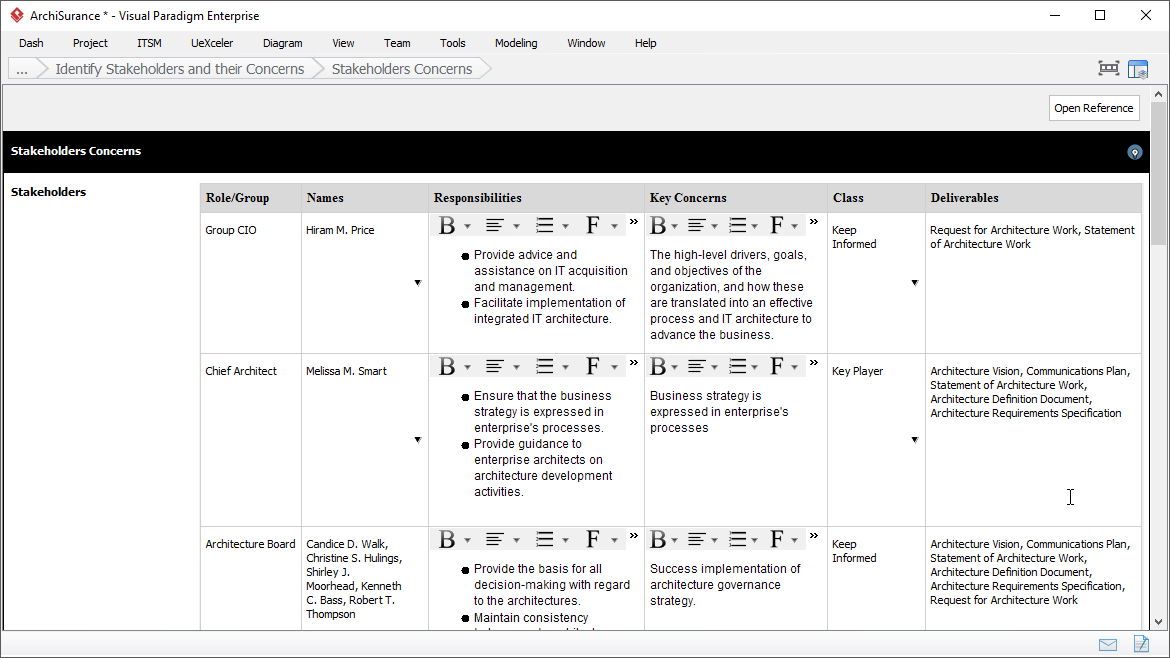
Enter the contact information for each stakeholder
Identify and enter the contact information for each stakeholder, which includes the address, mobile phone number and email address.
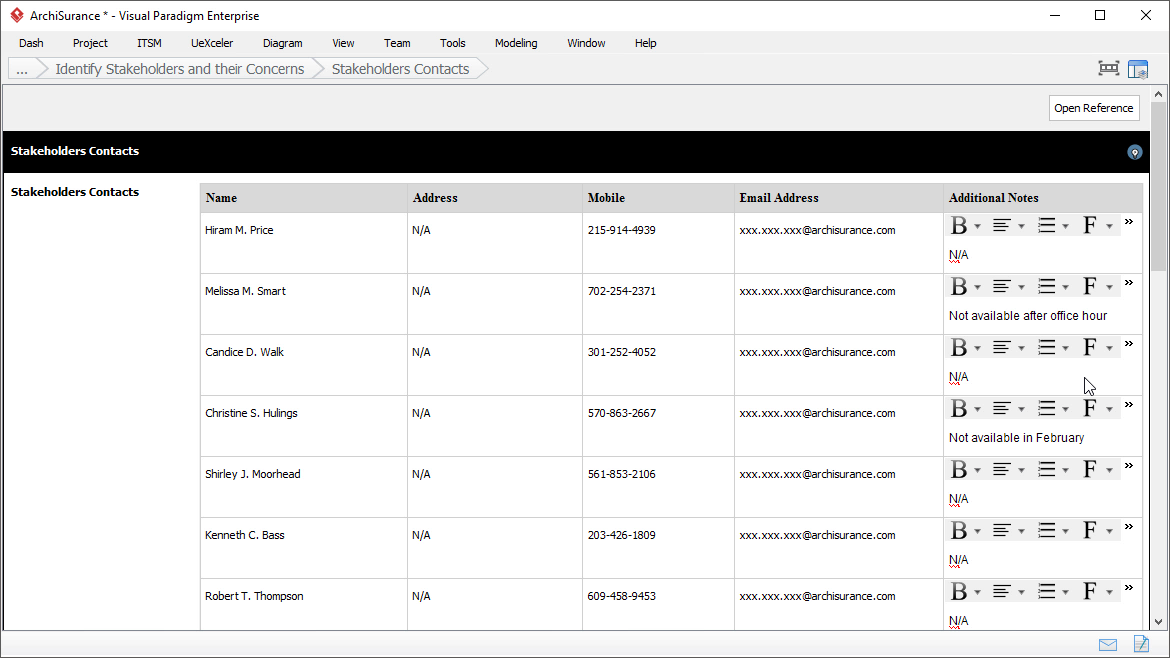
Step 4: Confirm Project Constraints
Revise the list of project constraints
Review and confirm the constraints on architecture work.
